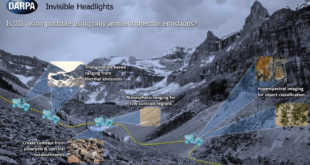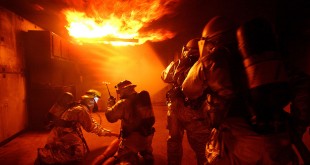The emerging billions of Internet of Things will need to connect billions of devices deployed in the physical world (the so-called “edge” of IoT) to the cloud, bringing real-world data and analytics to operations. …a challenge with current solutions. Much of the Internet of Things (IoT) is mobile, and sensors …
Read More »Military “Internet of Things” require Robust Communication and Network technologies
There is great potential for IoT technologies to revolutionize modern warfare, leveraging data and automation to deliver greater lethality and survivability to the warfighter while reducing cost and increasing efficiency. Analogous to IoT, Military internet of things (MIOT) comprising multitude of platforms, ranging from ships to aircraft to ground vehicles …
Read More »New Materials enhance Artificial Photosynthesis to produce Clean Air, and Renewable Energy using more efficient and cheaper methods
Energy is the fuel for growth and life. Despite centuries of over-reliance on fossil-based energy sources with devastating effects on the planet, more environmentally friendly and renewable options keep emerging as suitable alternatives. Hydrogen generation by water splitting has long attracted attention due to its zero-emission advantage. Each water …
Read More »DARPA BETR plans a bioelectronic interface for Intelligent Healing for Soldier’s wounds through dynamic, adaptive, and precise human therapies
Nowhere is prompt and effective medical treatment more important than on the battlefield, where injuries are severe and conditions dangerous. Soldiers are vulnerable to many injuries on the battlefield, the most common combat wounds include: Blast wounds caused by landmines, grenades, IEDs (improvised explosive devices), and suicide bombings where the …
Read More »Artificial Photosynthesis breakthroughs promise a new renewable energy source to tackle climate crisis
Since ages the natural photosynthesis has sustained human civilization by providing food, fuel and the life sustaining environment, which is now threatened by the twin challenges of energy security and global warming. Researchers all over the world have turned to artificial photosynthesis for future sustainable life on this planet. Artificial …
Read More »Adressing the Super-EMP and other Electromagnetic Weapon threat through technologies and countermeasures
The electromagnetic pulse commonly abbreviated as EMP, is a high-intensity burst of electromagnetic energy caused by the rapid acceleration of charged particles, can be produced by intense solar storms or by a nuclear weapon detonated high in the atmosphere. For example, solar geomagnetic storms (geomagnetic disturbances or GMD) create immediate …
Read More »DARPA’s Invisible Headlights program developing passive Infrared technologies for military autonomous systems to navigate in pitch dark and caves
A new programme from the US Defense Advanced Research Projects Agency (DARPA) aims to address a key weakness of autonomous and semi-autonomous land systems: the need for active illumination to navigate in low-light conditions. Accurate position and attitude information of the vehicle as well as the ability to detection static …
Read More »New food technologies to enhance soldier perfomance for success in military operations.
With nutritional status being central to success in battle, food technology has long been considered an enabler for military operations. Food technology has been instrumental in ensuring that troops remain “fit to fight”. Early military leaders realised that how well their men were fed played a crucial role in success …
Read More »Global threat of landmines and IED require new IED neutralization technologies
IED’s have become an extremely significant and dangerous force protection issue in the wake of Operation Iraqi Freedom (OIF) and the Global War on Terror (GWOT). Insurgents and terrorists are using a variety of asymmetric techniques to attack militarily superior coalition forces with military ordnance components combined with commercial off …
Read More »New detection technologies tracking terrorists through thick concrete, underground tunnels, and caves
In April 2017, the U.S. military dropped the most powerful non-nuclear bomb ever used in combat on a tunnel complex in Afghanistan’s Nangarhar province. The airstrike targeted the Islamic State’s Khorasan branch. The use of the GBU-43/B Massive Ordnance Air Blast weapon, the so-called “Mother of All Bombs,” highlighted the …
Read More » International Defense Security & Technology Your trusted Source for News, Research and Analysis
International Defense Security & Technology Your trusted Source for News, Research and Analysis









